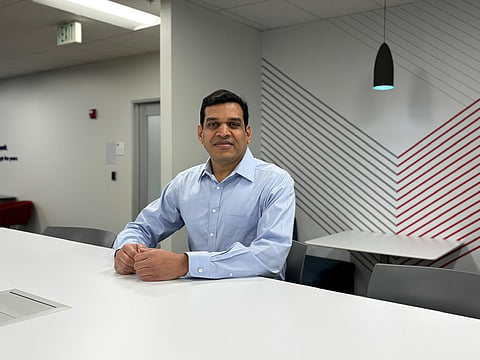

Migrate thousands of clients from one financial system to another. Migrating customers from one financial system to another is a daunting, yet critical, precision-strategic-innovative undertaking. Any kind of disruption could result in monetary loss, regulatory downfall, and customer dissatisfaction. Migrations are large-scale, and require rigorous methodologies-from data validation and automation to risk mitigation and real time monitoring. Using cutting-edge technologies and best practices, the financial institutions achieve seamless transitions with minimal downtime.
The seamless transition of banking customers from one institution to another is a critical process in the fast-evolving financial landscape. Vikas Kulkarni, a seasoned software engineer, played a pivotal role in one of the most significant acquisitions in recent banking history, overseeing the conversion of treasury customers to a new digital banking platform. His leadership in this large-scale migration project ensured minimal disruption for over 10,000 commercial customers, setting a benchmark for operational efficiency in the banking sector.
Known for his technical skills and leadership qualities, Kulkarni was elevated to the position of Lead Software Engineer and immediately undertook the customer conversion project. Recognition for his efforts came with a boast-worthy industry award in recognition of his role in successfully executing a 'high-risk' banking transition with exceptional precision. Besides this project, he also created scalable frameworks and built automated tools to prepare for future bank acquisitions and mass customer migrations.
One of the most difficult aspects of migrating customers is ensuring that the changeover is as seamless as possible without too much disruption to the service. Under Kulkarni, the organisation has developed an effective migration plan for its client data. This includes providing automated extraction and transformation and validation of extremely large amounts of customer data. This reduces manual reconciliation effort by 60 percent, thus speeding up the process time. "Real-time monitoring and fallback systems provided a 99.9% success rate; while maintaining high accuracy in the data, the risks of service outages in conversion are mitigated," he said.
Automation played a crucial role in improving operational efficiency. Kulkarni’s customized scripts streamlined the data validation process, reducing the potential for human error while ensuring consistency across both banking platforms. By scheduling the conversion during off-peak hours and implementing real-time monitoring systems, his team successfully migrated customers without major incidents, enabling near-zero downtime.
Apart from operational efficiency, his work had a direct impact on customer experience. His efforts in optimizing the onboarding process post-conversion led to faster treasury customer setup times, ensuring the continuity of critical financial services. By automating data reconciliation and refining the fallback strategies, he mitigated risks and provided a safety net against potential errors, further reinforcing customer trust in the banking systems.
Reflecting on the future of banking transitions, Kulkarni emphasizes that reusable migration frameworks and automated validation processes will be key to minimizing costs, risks, and project timelines. He foresees artificial intelligence playing an integral role in detecting anomalies, predicting migration errors, and optimizing post-conversion configurations. Moreover, the emphasis on real-time monitoring and proactive risk mitigation strategies will continue to shape the industry’s approach to large-scale banking transitions.
In addition to his successful data migration, he is adding a big body on the aspect of in-house knowledge sharing within the company. His technical presentations and hackathon participations have helped modify the best practices for future large-scale data projects. His recognition as a leader in this field manifests not only his personal contributions but also the emerging complexity which is being realized with regard to financial technology solutions within the industry. The more banks continue occupying themselves with mergers, acquisitions, and technology shifts, the more such specialists as Vikas Kulkarni are making way for innovation in these transitions, assuring that they are not just seamless but somewhere in the creation of an entire new efficiency and security paradigm for future banking experiences.
